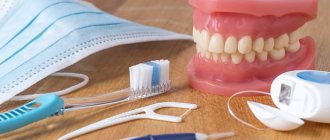Pharyngitis is an inflammatory process that forms on the back wall of the larynx and affects the mucous membrane, as well as deeper layers, tissues of the soft palate and lymph nodes. The acute form of pharyngitis can develop into chronic if the patient does not seek help from a doctor and self-medicates.
Since the pathological process in the larynx is caused by the spread of pathogenic bacteria, the risk of developing pharyngitis increases in people with a weak immune system and in those who suffer from ENT diseases or are predisposed to them.
How dangerous is pharyngitis and how does it manifest itself? Which doctor should I contact and how to treat the disease? We will answer these and other questions in this article.
Reasons for the development of pharyngitis
Experts believe that the peak development of pathology occurs at the end of winter and the beginning of spring, since at this time the human immune system is especially susceptible to colds. Often in the spring season, a lack of vitamins and microelements in the human body leads to the appearance of vitamin deficiency, the body weakens and creates an excellent environment for the development of pathogenic bacteria. Inflammatory processes are also possible: both separately and against the background of the underlying disease.
The first signs of pharyngitis and its further treatment may differ depending on the stage of the pathology, gender, age and general health of the patient.
We include the following as the main reasons for the development of pharyngolaryngitis:
- hypothermia, eating too cold foods;
- deformation of the nasal septum;
- strains of microorganisms that cause the development of chlamydia, candidiasis, whooping cough, scarlet fever, measles;
- adenovirus, influenza virus;
- streptococci, staphylococci, pneumococci;
- sinusitis, tonsillitis, caries, rhinitis;
- difficulty breathing through the nose;
- pathologies of the gastrointestinal tract: reflux, heartburn, hernia;
- abuse of bad habits;
- regular high loads on the vocal cords;
- polluted, toxic air;
- hormonal disorders and endocrine pathologies (diabetes mellitus, obesity, hypothyroidism, etc.);
- tonsillectomy, which was performed on the patient previously;
- infectious diseases in chronic form;
- weakened immunity.
Causes of pimples
There are many reasons for the appearance of such formations on a child’s tongue. Let's try to understand each of them in more detail.
Tongue injuries
After three months of age, babies begin to actively explore the world around them, including trying to taste everything. But the objects that enter the child’s mouth are not always sterile. Older children often have a habit of chewing on sharp objects, which can also scratch or injure the tongue. Even minor trauma to the mucous membranes in combination with the ingress of microbes can provoke an inflammatory reaction and the appearance of painful pimples, which are often localized on the tip of the tongue.
Candidiasis or thrush
In children under one year of age, the immune system is not fully formed, so any disease leads to a decrease in the body’s protective properties. The consequence of this is candidiasis in the oral cavity - active growth of fungi of the genus Candida on the mucous membranes, which can also be provoked by taking antibiotics. One of the typical manifestations of thrush is the appearance of pimples and a cheesy white coating on the entire tongue surface, spreading to the entire oral cavity. If you remove such plaque, you can find redness, swelling and even the appearance of small ulcers underneath it.
Stomatitis
With stomatitis, a large number of small white pimples appear on the root of the tongue at its base, on its lateral surfaces or at the tip, which are very painful and cause discomfort while eating or talking. Such pimples can merge to form extensive ulcers. In severe cases, the child feels generally unwell and has a high body temperature.
Allergy
Children under two years of age are more likely than adults to have allergic reactions. One of the manifestations of allergies is the appearance of small whitish or red pimples on the tongue. They can be located both at the tip and in the area of the root of the tongue and move to other parts of the oral mucosa: lips, gums, palate. Most often, such formations bother the child, itch and cause pain when eating and swallowing. But this is not characterized by an increase in body temperature.
An increase in allergy symptoms and the appearance of new pimples is caused by eating a product to which you are hypersensitive. Often the cause of such allergic reactions is toothpaste or other oral care products, even if they are recommended for use in children.
Angina
A bacterial infection that affects the tonsils in children can also spread to the lymphoid tissue, which is located at the root of the tongue closer to the throat. This is accompanied by the appearance of white pimples with a purulent coating in the tongue area. When the pus is removed, areas of redness and slight swelling are exposed. The formations are painful, interfere with normal swallowing and significantly worsen the child’s well-being: he becomes capricious, refuses to eat, and his body temperature rises. Often, if there are such pimples near the throat, you can feel enlarged lymph nodes.
Herpetic infection
Infection with the herpes virus most often occurs in childhood, and when the body’s immune defense is reduced, the infection can worsen. In this case, watery small pimples on a red background appear on the tongue, which can also appear on the child’s lips and throat. They are very painful and after opening them, shallow ulcers appear, which prevent the child from eating and talking normally.
Dysbacteriosis and unbalanced nutrition
Errors in the nutrition of a child, especially of a younger age, as well as disturbances in the normal composition of the intestinal microflora can lead to glossitis - inflammation of the mucous membrane of the tongue. This leads to the fact that the epithelium of the papillae begins to actively divide, they take on the appearance of inflamed red or whitish pimples. They rarely bother the child; sensitivity to hot, cold or sour foods may only change.
Symptoms of pharyngitis
The first signs of the disease may differ depending on the type of pharyngitis. They are both local and general in nature. But there are common signs that are characteristic of any type of pharyngitis: sore throat, bad breath, stuffy ears and difficulty swallowing. With an active inflammatory process, an increase in body temperature above 38° can be observed - this is how the body fights a foreign infection. General signs: sweating, poor appetite, weakness, dizziness, fatigue, fever, chills. Some complain of pain and noise in the ears, and discomfort when exposed to loud sounds.
- During acute catarrhal pharyngitis, swelling and redness of the mucous membranes of the larynx appears. Also, red follicles may form on the back wall of the throat, and clear and slightly cloudy mucus may accumulate. There is swelling and redness of the tongue.
- In the purulent form of acute pharyngitis, ulcers with an accumulation of purulent masses appear on the surface of the posterior pharyngeal wall.
Another reason for the formation of pimples on a baby’s tongue is dysbacteriosis.
With dysbacteriosis, pimples cover the mucous membrane of the child’s tongue and externally resemble small ulcers. Treatment should be started immediately, since such bubbles cause severe pain.
In cases where pimples turn into ulcers, you should pay attention to the condition of the child’s intestines. After all, it is possible that exactly the same ulcers appear there as on the surface of the tongue. Therefore, if you notice even small pimples on a child’s tongue, you should undergo an examination of the whole body. This will allow us to determine the causes of this phenomenon and begin appropriate treatment.
Acute pharyngitis
Acute pharyngitis can occur independently, and can also be accompanied by acute inflammation affecting the upper respiratory tract: rhinitis or inflammation of the mucous membranes of the nasopharynx.
Depending on the cause of development, acute pharyngitis occurs:
- Viral – most often caused by rhinovirus;
- Bacterial – caused by streptococci, staphylococci and pneumococci;
- Fungal – source of the inflammatory process – Candida;
- Traumatic - caused by damage to the pharynx and larynx: the throat was scratched by a sharp bone or burned by boiling water, severe stress on the ligaments;
- Allergic – occurs when inhaling allergens or irritants, such as tobacco, exhaust fumes or dusty air.
Chronic pharyngitis
According to the depth of damage to the pharyngeal mucosa, chronic pharyngitis is divided into: catarrhal, hypertrophic and atrophic forms.
- Chronic catarrhal pharyngitis - there is slight swelling of the tissue layers of the pharyngeal mucosa. Individual areas are sometimes covered with clear or slightly cloudy mucus. It develops as a result of acidic gastric contents entering the throat, for example, in the case of a hiatal hernia. Therefore, catarrhal chronic pharyngitis is a consequence of the development of diseases of the gastrointestinal tract.
- Chronic hypertrophic pharyngitis is a significant severity of swelling of the mucous membrane. Additionally, thickening of the uvula and swelling of the soft palate are observed.
- Chronic atrophic pharyngitis is characterized by some thinning of the lining of the pharynx. They are usually pale pink, sometimes shiny varnished. Some of their areas become covered with crusts, viscous mucus and pus.
Any type of chronic pharyngitis develops due to the fact that the acute form of the disease was not cured in time and developed into a more serious form. Chronic pharyngitis also appears as a consequence of rhinitis, sinusitis, deviated nasal septum, nasal polyps - that is, when nasal breathing is difficult for a long time. In addition, long-term use of vasoconstrictor drops also leads to the appearance of chronic pharyngitis.
How does pharyngitis manifest and progress in children?
Children suffer from pharyngitis more severely than adults. This especially applies to babies under one year old. Swelling of the mucous membrane can cause signs of suffocation; the pain that accompanies the disease reduces the child’s appetite. Often, a baby’s body temperature can reach 40°. The most difficult thing in this situation is that a small child cannot say what hurts.
Incorrect treatment can lead to irreparable consequences for a small, fragile organism. Therefore, at the first signs of pharyngitis, consult a doctor immediately.
How to cure pimples on a child’s tongue: list of medications
If your baby does develop some pimples on his tongue, you should not self-medicate. If the health condition leaves much to be desired and the child has a fever, then you should call an ambulance and wait for the doctor on duty to arrive. When symptoms have just begun to appear and the child’s health condition does not cause discomfort, then you can go to see a doctor on your own. Treatment is prescribed only by a specialist.
Here are the main medications that a doctor may prescribe:
- Nystanite (antibiotic, fights candida fungus)
- Furacilin (mouthwash, antimicrobial)
- Cefazolin (fights inflammatory and infectious diseases)
- Ribomunil is an immunomodulator (increases immunity, preventive against infectious diseases)
- Multivitamins
An unpleasant symptom in a child.
But parents, in turn, should also help the child recover faster. What recommendations should you follow:
- Make sure that the baby does not put his hands in his mouth and does not crush the bumps. Such actions can lead to complications, as there is a risk of causing an even more serious infection.
- Watch your diet. Feed your baby cereals, purees, and light broths.
- Maintain oral hygiene. After every meal, rinse your mouth.
- Provide your child with plenty of fluids.
- Rinse your mouth with decoctions.
It is important to follow your doctor's recommendations and follow his instructions carefully.
Sore throat and pharyngitis: what is the difference?
The general condition of the patient with acute tonsillitis or tonsillitis can be confused with the symptoms of pharyngitis. If the disease is diagnosed incorrectly, then treatment of pharyngitis in adults will not have any effect. And the acute form of the pathology can develop into a chronic one.
Unfortunately, many patients self-medicate and start using medications without a doctor’s specific prescription. This is extremely contraindicated! It is better to take care of your health in time and seek help from an experienced otolaryngologist.
It is important to remember that during pharyngitis, the larynx becomes inflamed, and during tonsillitis, the tonsils become inflamed. During a sore throat, it is always painful to swallow, and the pain intensifies even more when eating food. With pharyngitis, the opposite happens - while eating warm food or warm drinks, the sore throat decreases.
During the development of a sore throat, there is no cough or sore throat, only a sore throat and sometimes the formation of a white coating. With pharyngitis, there is a sore throat, as well as noise, pain, or congestion in the ears. The difficulty in distinguishing between these two diseases is further complicated by the fact that one patient can simultaneously develop both pathologies, since they are caused by the same pathogen.
Scarlet fever: symptoms and signs
The disease begins acutely, with a sharp rise in temperature. Headache, muscle and joint pain, body aches, rapid heartbeat, and general weakness increase. Intoxication can cause vomiting.
The tonsils, arches, pharynx and palate are excessively red, sometimes a coating appears like a sore throat (whitish, gray, purulent). The jaw and parotid lymph nodes become inflamed and enlarged, swallowing becomes painful and difficult. On days 4-5, the tongue becomes bright crimson with hypertrophied papillae.
Atypical forms of scarlet fever:
- extrabuccal - the pathogen penetrates through damaged skin, a purulent-necrotic focus is formed at the site of penetration with a most concentrated rash around, the pharynx is not affected;
- erased (in adults) - with symptoms of mild to moderate respiratory infection;
- scarlet fever with toxic-septic shock - develops more often in adulthood with severe cardiovascular and renal complications.
What type of rash occurs with scarlet fever depends on the nature of the infection and the age of the patient. In typical cases, the first elements of the rash appear on the 1-2 day in the face, upper torso, then on the elbows, groin folds. The nature of the rash is multiple dark dots turning into dark red stripes. Sometimes the elements merge into a large erythema (redness of a large area). On the face, rashes are observed on the forehead, temples, and cheeks.
Diagnosis of pharyngitis
Detection of all types of pharyngitis begins with a visual examination of the larynx using a special device and taking an anamnesis. A throat swab is also taken for examination to test for diphtheria.
Other types of diagnostics:
- Cultural examination - inoculation of taken materials on a nutrient medium.
- Rapid diagnosis - identification of streptococcal antigen in throat swabs.
- Immunoserological diagnosis - the method is used in case of streptococcal infection.
Laboratory research:
- Complete blood count – exclusion of blood diseases, infectious mononucleosis;
- A general urine test helps rule out kidney disease (glomerulonephritis).
Depending on the symptoms of the disease, as well as the condition of the larynx, the presence or absence of cough, fever, plaque on the tonsils and soreness and increased size of the lymph nodes, additional consultations with other specialists may be necessary: an endocrinologist, a cardiologist, an allergist.
Treatment methods for pharyngitis
Treatment must be comprehensive. The patient is prescribed medications that will relieve pain and reduce inflammation. It is also important to adhere to a special diet and exclude from the diet foods that irritate the mucous membrane of the throat and bring even more discomfort: alcoholic beverages, spicy and salty foods, sour foods, carbonated drinks.
Drug therapy
Depending on the clinical picture and general condition of the patient, the doctor may prescribe antihistamines, antitussives and antiviral medications. Lozenges/lozenges are used to relieve pain.
In some cases, they resort to the use of antibiotics. They can only be taken as directed by a doctor.
Local impact
Rinsing with special solutions also has a good effect on the inflammatory process and redness of the larynx. They have a gentle effect, relieve pain and improve the general condition of the patient.
To diagnose and identify the disease, you need to consult an otolaryngologist. At the city clinic, you can contact your primary care physician, who will issue a referral to an ENT specialist. However, this takes time. You often have to wait 2 weeks for an appointment with a doctor. In some cases, this is simply impossible, since it is necessary to quickly conduct an examination and prescribe treatment before the situation becomes critical.
Therefore, we recommend contacting the Medunion medical clinic. We employ practicing otolaryngologists, and you don’t have to wait several weeks for appointments. Sign up today for a time convenient for you, and get tested tomorrow.
Patients choose us because we provide the service of a specialist coming to your home if you cannot come to the clinic on your own. You can also take samples directly at home.
The cost of an initial consultation with an otolaryngologist in Krasnoyarsk at the Medunion clinic starts from 1,300 rubles. You can sign up on the website or by calling 201-03-03.










